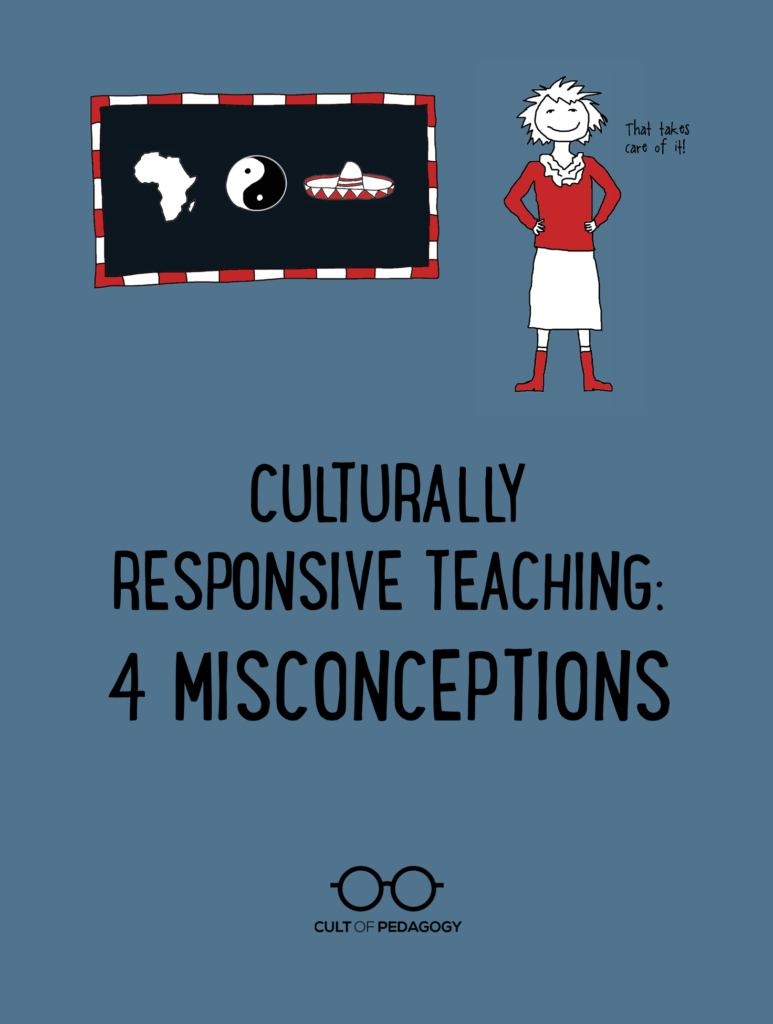
Listen to my interview with Zaretta Hammond (transcript):
Sponsored by Raymond Geddes and Kids Discover
The term “culturally responsive teaching” has been around for decades, but it seems to have gotten more attention in recent years. That’s good news: With our classrooms growing more diverse every year, teachers should be more interested in how they can best teach students from different backgrounds.
The not-so-good news is that in some cases, teachers think they’re practicing culturally responsive teaching, when in fact, they’re kind of not. Or at least they’re not quite there. And that means students who might really thrive under different conditions are surviving at best. We all want to do better for these students, but how to do it still hasn’t become common knowledge.
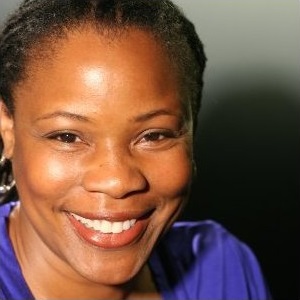
Zaretta Hammond
To move the needle forward a bit more, I invited Zaretta Hammond to share some common misconceptions teachers have about culturally responsive teaching. She is the author of the 2015 book Culturally Responsive Teaching and the Brain, which offers a neuroscience-based teaching framework that goes beyond surface changes to really build cognitive capacity in our students from diverse backgrounds. When I read it, I realized that true culturally responsive teaching isn’t as simple as I thought it was; it’s much more holistic. In fact, in most cases, it wouldn’t even look “culturally responsive” to an outside observer.
Regardless of where you are in your own understanding of this subject, taking a closer look at these four misconceptions should help you refine it a bit more.
Misconception 1: Culturally responsive teaching is the same as multicultural or social justice education.
Educators’ efforts to create classrooms where all students succeed can be sorted into three categories. Although the groups can overlap, they are not interchangeable; each one approaches diversity from a completely different angle. Understanding their differences will help you label the work you’ve already done and figure out your next steps.
Multicultural Education is, according to Hammond, “the celebration of diversity, what we usually see in schools. While those are really noble things and critical to a high-functioning classroom and school climate, it doesn’t have anything to do with learning capacity.” Although there is value in students’ seeing their own cultures reflected in places like the classroom decor, it won’t impact their cognitive abilities.
“I call it the ‘It’s a Small World’ approach,” Hammond says. “That does not have anything to do with instruction.” Rather than focus on what she calls students’ “surface culture,” teachers would get more from learning about collectivism, an ideology common in many of the cultures our students come from. “Most schools are centered around an individualistic orientation,” Hammond explains. “Keep your eyes in your own work. Pull yourself up by the bootstraps. Whereas collectivism is, I am because we are. It’s interdependency.” If teachers understand what motivates students who come from collectivist cultures, they will be able to reach these students more effectively. (Both resources at the bottom of this post have information about collectivism.)
Social Justice Education “is about building a lens for the student, really being able to look at the world and seeing where things aren’t fair or where injustice exists,” Hammond explains. Again, while this kind of teaching is necessary and important, it’s not the same as culturally responsive teaching, which focuses on learning capacity. “You can have a student have a critical lens,” Hammond says, “but if he’s reading three grade levels behind, (social justice teaching) is not going to do much to accelerate that.” (Learn more about social justice resources here.)
Culturally Responsive Teaching “is about building the learning capacity of the individual student,” Hammond says. “There is a focus on leveraging the affective and the cognitive scaffolding that students bring with them.” The simplest way to judge whether your teaching is culturally responsive is whether your diverse students—students of color, English language learners, immigrant students—are learning. If they are not succeeding academically within your classroom norms, your approach might need to be more culturally responsive.
To learn more about the differences between these three approaches, download Hammond’s Distinctions of Equity chart.
Misconception 2: Culturally responsive teaching must start with addressing implicit bias.
Many diversity trainings and other efforts to build teachers’ cultural competence start by having teachers examine their own implicit biases. Although this is essential, Hammond says, it may not need to be the very first step, because that can delay (or sometimes replace) a shift in instructional practices.
“You do need to get to implicit bias at some point,” she says. “It’s just not the starting point. If you start there, you can’t pivot to instruction. Whereas when you understand inequity by design, you can actually talk about instruction but also come back to talk about microaggressions. The sequencing of that is really important.”
When the time comes to address implicit bias, Hammond’s tools for interrupting implicit bias will help.
Misconception 3: Culturally responsive teaching is all about building relationships and self-esteem.
While healthy relationships and student self-esteem are necessary factors in setting the stage for learning, they do not directly increase students’ ability to do more challenging academic work. “There’s a big effort afoot in terms of social emotional learning programs, trying to help students gain self regulation and build positive relationships with students,” Hammond observes. “Here’s what the schools are finding that do surveys: After a few years of this kind of work, their positive climate has gone up, satisfaction surveys among adults as well as kids are really high, but the achievement doesn’t move.”
This is not to suggest that relationship building should be tossed out. “For students who have been marginalized and don’t feel welcome,” Hammond explains, “that relationship becomes important, because you want them to actually do the heavy lifting of the cognitive work, (and) that’s not going to happen if you can’t get the student to be in a trusting relationship. So the trusting relationship is just one part, and not the part. It is the on-ramp to the kind of cognitive high-level problem-solving and higher-order thinking we want students to do. I see a lot of people just doing the relationship piece.“
Misconception 4: Culturally responsive teaching is about choosing the right strategies.
When working with teachers, Hammond is often asked to provide an actionable set of strategies that teachers can simply integrate into their practice. But true culturally responsive teaching is more complex than that. “It’s really a challenge to try to say, ‘This is it in a nutshell,'” she says. “Teachers need to interrogate their practice a little more robustly, because it’s not an off-the-shelf program, it’s not two or three strategies. It’s not plug and play.”
This “plug and play” misconception can lead teachers to do things like adding call-and-response to their classroom routine, then assuming they have done enough to reach diverse students. While this strategy is often included in culturally responsive toolboxes, if a teacher doesn’t take the time to learn how to use call-and-response to deepen student thinking, it might never serve a purpose beyond fun.
And oftentimes, the instructional shifts that will make the biggest differences don’t always look “cultural” at all, because they aren’t the kind of things that work only for diverse students. “This kind of teaching is good for all brains,” Hammond says. “So what you’re doing to actually reach your lowest performing students is going to be good for your highest performing students.” To get a closer look at the kinds of shifts that make a big difference, these three tips for making lessons more culturally responsive can start you in the right direction. ♦
More Resources
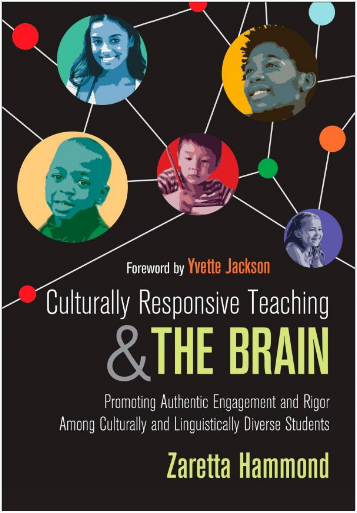
Culturally Responsive Teaching & the Brain
Zaretta Hammond
The Diversity Kit: An Introductory Resource for Social Change in Education
published by Brown University
(Part 2 on Culture is especially relevant to the topics discussed above.)
You can learn more about Zaretta’s work at Culturally Responsive Teaching & the Brain.
Join my mailing list and get weekly tips, tools, and inspiration—in quick, bite-sized packages—all geared toward making your teaching more effective and fun. You’ll get access to our members-only library of free downloads, including 20 Ways to Cut Your Grading Time in Half the e-booklet that has helped thousands of teachers save time on grading. Come on in!!

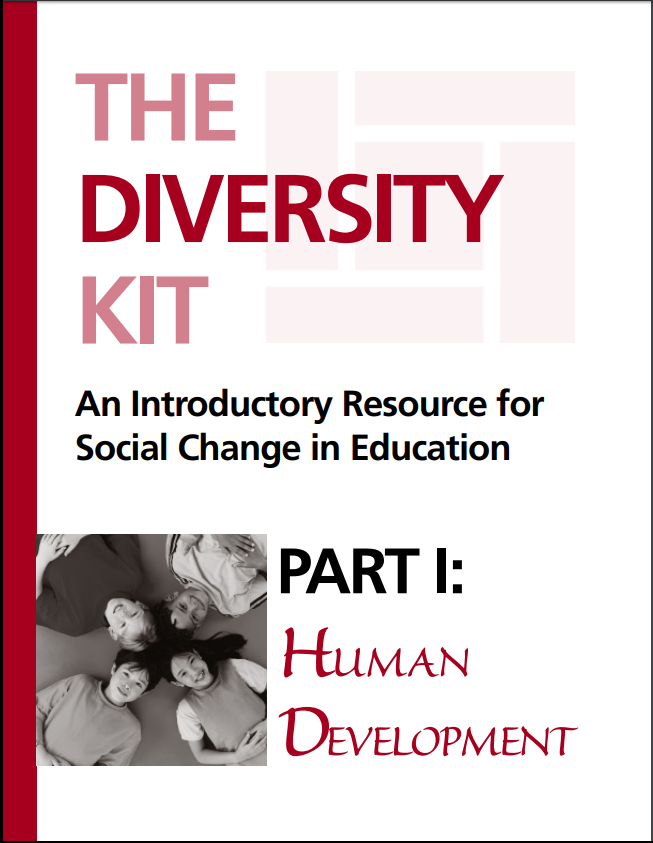
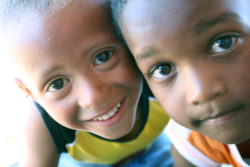


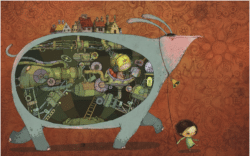
What an important post. I humbly and readily admit after reading this, that I have subscribed to some of these myths. I wonder if I might link this post to the resources on socialleadia.org? In the book I have a chapter on justice and character and I think this would make a great addition. Please let me know what you think.
Jennifer, that would be great. Thanks so much for sharing it!
I was actually wondering which page of the book this quote is found on “the celebration of diversity, what we usually see in schools. While those are really noble things and critical to a high-functioning classroom and school climate, it doesn’t have anything to do with learning capacity.”
Hi Barbara,
That quote came from Jenn’s interview with Zaretta. We’d really have to comb through the book to see if it’s also in there, but check out p. 8 and particularly Chapter 8, p.123. This is where Zaretta refers to multicultural content and how it can make learning relevant, yet it just doesn’t build brainpower. I think this section might be what you’re interested in. Hope this helps!
Thank you for your reply. I’d like to use that quote in a paper, and wanted to make sure I cite it correctly.
Thank you! This was a great podcast– informative, important and timely.
I’m recommending it to my admin team as a focus for ongoing professional development and inquiry this year. Especially appreciate the connection to the brain, and to the emphasis that this is not “plug and play”–
When the Thirteen Colonies first established, their driving premise was always, “If You Don’t Work,Then Don’t’ Eat.” However, under Adam Smith where we were introduced bank accounts throughout the Americas which meant that you did not need work, but you could eat. When those bank accounts voluntarily went back to Europe in 2005, as the New Economy gains its momentum, we find ourselves right back in class of, “If You Don’t Work, Then You Don’t Eat.” Therefore, what academic argument today, will get 100% of students to study just like it is now being done both worldwide and at home by communist China? Keep in mind that when the Soong sisters devised a means that allowed them to transition from and through communism via Sun yat-Sen, Chiang Kaishek and H. H. Kung to what we see today…..
Mr. Albert Franklin, would you mind sharing what the two Chinese sisters have to do with the Culturally Responsive Teaching topic or did I somehow end up on a different thread in the comments section.
I love the link between CRT and neuroscience. At the end of the day, this type of teaching is just best practise. This was a great podcast for my the thesis that I am currently writing on how culturally diverse students are being introduced to new school cultures and strategies that students feel are helpful when entering a new school culture. Thanks so much for all of the resources 🙂
I also liked the link between Culturally Responsive Teaching and Neuroscience. Teachers and students are collectively interacting with each other on a daily basses, using teaching methods that are challenging but honoring students diversity. We as educators should be creating emotional safe spaces that can foster trust among students. Implementing cultural responsive teaching techniques in the classrooms using a variety of elements to create relationships among students.
Thank you for the informative post. I really learned a lot about culturally responsive teaching and will be able to apply this knowledge to my classroom when I finish school. We have touched a little bit on CRT in some of my classes, but this has been the most informative so far!
I found this article extremely interesting and I have put Zaretta’s book on my summer reading list.
In New Zealand, where I teach, our curriculum and practicing professional standards require us to demonstrate a commitment to bicultural partnership. The Treaty of Waitangi extends equal status and rights to Māori and Pākehā , which places a particular responsibility on all teachers in New Zealand to promote equitable learning outcomes for Māori and Pākehā. Ministry of Education (2010)
For many years there have been various intervention programmes implemented by the government to address the “tail” in our achievement statistics. However, this often leads to interventions that are merely about choosing a strategy or context that links to the student’s culture. To support teachers in New Zealand the Te Kōtahitanga Effective Teaching Profile provides a basis for professional development and intervention. Ministry of Education (2011)
I particularly liked your linking of culture with neuroscience research. Too often our own misconceptions can lead to learning not meeting the needs of diverse learners. Teachers must be aware of their own cultural assumptions as it is the attitudes and expectations of the teacher that influences their decisions about levels of difficulty and evaluation of progress when creating a learning course. Hattie (2012)
I agree with Hammond in that by building trusting relationships with learners and their families will enable us to challenge them in their learning. Student’s are more likely to take risks in their learning and do the heavy lifting if they feel safe and supported. The quality of the relationship between teacher and student is one of the most crucial factors in Māori learners being able to engage effectively in education. Bishop (2009) Engaging with the student’s support network outside of school is also vital. Tātaiako illustrates the competencies that teachers of Māori learners need and again iterates the importance of teachers’ relationships with their whānau and iwi. Ministry of Education (2011)
I think that we are fortunate that our practice is explicitly tied to the needs of diverse learners and the requirement for teachers to be culturally responsive. Reading this article has highlighted the need to be vigilant in this and ensure we are fully committed to meeting these needs.
References:
Bishop, R. (2009). Addressing diversity: Race, ethnicity, and culture in the classroom. Retrieved from http://researchcommons.waikato.ac.nz/handle/10289/4671
Hattie, J. (2012). Visible learning for teachers: Maximizing impact on learning. Routledge.
Ministry of Education. (2011). Tātaiako Cultural competencies for teachers of Māori learners. Wellington: Ministry of Education
Ministry of Education. (2010) Practicing Teacher Criteria. Retrieved from: https://educationcouncil.org.nz/content/registered-teacher-criteria-1
Christine. Thank you for your thoughtful response. I appreciate you pointing out that it isn’t about a single strategy linked to the students culture, but about the quality of the relationship and interrupting cultural assumptions on the part of the teacher . This also means teachers have to develop a bi-cultural (and often tri-cultural) lens that allows them to see diverse students holistically and recognize their learning behaviors that are grounded in their indigenous culture, which often includes elements not common in White dominant culture — connection to ancestors, learning through emotions & spirit, learning by apprenticeship, etc. It doesn’t matter if we are in New Zealand or New York City, the needs of diverse students have to be repositioned to be at the center rather than at the margins of the education system.
I teach Spanish at the middle school level. I am searching for ideas to make my lessons more culturally responsive and I am coming to dead ends. I would so appreciate some direction. I am training new teachers and I am finding I need to educate myself more on this topic. Thank you.
hi, just a note that many theorists would include culturally responsive teaching as one aspect of multicultural education.
Hi! A quick thought about Nov.20 Guest’s comment. I would agree that among theorists the concept of multiculturalism is slightly different than what’s become popular in schools. James Banks, the father of multicultural education talks about an “equity pedagogy” at the core of the stages of multiculturalism. When I use the term “multiculturalism” I am referring to its popular “It’s a Small World” connotation seen in schools. This is very different than what Banks envisioned around “culturally responsive” teaching. For him, this was the highest articulation of multicultural education as he outlined it. For all educators, his original work is worth reading.
Somehow, I missed this podcast even though I am on your mailing list, but I am grateful that our staff development team at my school asked us to listen to your conversation with Zaretta Hammond. Zaretta’s explanations of misconceptions helped me to better understand what Culturally Responsive Teaching is not, which helped me to better understand what it is. No one at my school or in my district has been able to explain it as well as Zaretta did in this podcast. I always felt like I was missing something and doing something wrong. I loved hearing Zaretta say that Culturally Responsive Teaching is about “accelerating students’ learning.” I have felt for a long time that we have been told it’s all about building relationships, which it is to a degree, but it’s also about building trust to help students grow exponentially in their learning. I teach 8th grade English, and I am amazed every year about how so many of my students have not had high expectations of them by their teachers – it’s so obvious. There is so much more I could say, but I will stop here. You don’t need a novel from me. Thank you again, Jennifer and Zaretta, for a thought-provoking and eye-opening conversation.
Allison, thank you so much for taking the time to write. It really means a lot to me to know that this filled some important gaps for you. I would highly recommend Zaretta’s book, as it goes much more in depth than we did in this interview. Be well!
I have her book. Will be reading it!
This summer I took a short professional development class on Culturally Responsivre Teaching. I thought it would be interesting, and I didn’t think I would learn that much. Lol I am happy to say that I was wrong!! It was so informative, my wheels were spinning, I wanted more ASAP. I went home and ordered the book, and found a University that offered an independent learning program whereI could create my own summer learning. I dove in and was reading, speaking, dreaming CRT all summer. It spoke to me as I have been teaching ESL for many years and now I am teaching at an alternative hs.
Thank you thank you!!
I want to continue learning more and helping my school to move forward in Culturally Responsive Teaching.
I just wanted to share and express my gratitude.
This is so great to hear, Gerri! Thanks so much for sharing — I’ll make sure Jenn see this!!!
Such an important podcast–thank you for the opportunity to hear Dr. Hammond speak about this important issue. In my project, we’re creating professional development specifically for community college educators. I would love to share the tools for interrupting implicit bias, but the link is not working. Can you update the link?
Thank you, again, for a wonderful podcast!!
Thanks for the heads up! We’ll get that fixed as soon as we can — in the meantime, here’s a link to Four Tools for Interrupting Implicit Bias.
Your definition of multi-cultural education appears to based on a decades-old approach. While certainly there are those who think it means “small world” pot-luck dinners, heroes, holidays and folk dancing, that was debunked LONG ago.
Nevertheless, your contrast of ME with culturally responsive teaching is valuable.
Hi Laura,
Thanks for sharing. Unfortunately, we’ve seen evidence that some of these dated approaches are still happening in schools which is one of the reasons for putting this information out there.
Laura,
I agree that the idea of multicultural education as a route to equity has been largely debunked. But it is still largely how many schools are implementing their equity agenda, especially where the majority of faculty are White educators and the student body is diverse racially, ethnically, and linguistically.
The Dimensions of Equity chart grew out of my attempt to help teachers clarify their misconceptions about culturally responsive teaching (which they thought was about valuing diversity through multiculturalism). Multiculturalism plays into the notion of “color blindness” as being the route to equity. We know this isn’t true and actually works against building cultural proficiency as the necessary mindset for that gets an educator ready to take up culturally responsive teaching.
A key point I share with educators when we review the chart together is that multicultural education doesn’t address efforts to improve instruction or accelerate learning. That is usually an eye opener for them. Unfortunately, there are large numbers of leaders (principals, chief academic officers, and even superintendents) and teachers, who don’t understand the difference yet.
I believe our collective work is to set the record straight about how culturally responsive teaching isn’t “our grandmother’s” multiculturalism from back in the day. Thanks for helping with that effort.
I know I am late to the discussion. The information presented here is very valuable. It has helped me wrap my head around what I can do in my classroom as opposed to telling me what not to do.
I am taking a master’s course in Multicultural Education. In this course we read an article by Enid Lee. She prefers using the term anti-racism education instead of multicultural education. She says that “students, parents, and teachers need to be equipped with the tools needed to combat racism and ethnic discrimination, and to find ways to build a society that includes all people on an equal footing.” I am not arguing against this.
I just need some clarification. I like Ms. Hammond’s explanation of culturally responsive teaching in that it “addresses efforts to improve instruction and accelerate learning”. As a math teacher, I can see myself becoming a more culturally responsive teacher because it will improve instruction and accelerate learning. How does anti-racism education intersect (if at all) with CRT?
In response to Jennifer C.’s (Sept. 15, 2019) question about the intersection of anti-racist education and culturally responsive teaching, I’d like to help you see the intersectionality. Think of it this way. Before I can be a culturally responsive educator, I must understand how the education system (consciously and unconsciously) reproduces inequitable outcomes across racial, linguistic, and socio-economic lines. You can learn more through john powell’s work (he doesn’t capitalize his name) around structural racialization. In education, this looks like black and brown students not having access to rigorous learning, not having proper reading instruction so that over time they fall behind in other classes because the cognitive act of reading makes our brains better prepared for higher level learning and math. By this one act, we know that down the road these children will fall behind with no overt racist action taken.
Culturally responsive teaching comes after a teacher understands how inequity by design works and uses the powerful pedagogy of CRT to help student process information better. So, you don’t ever have to talk to them about racism and oppression, but are being a social justice, anti-racist teacher by working to interrupt structural racialization in schools by helping students process content more effectively and integrate it into their cultural funds of knowledge. Hope that helps.
As someone who has been reared hearing the importance of social justice and multi-cultural awareness alone, it was refreshing to listen to this podcast and hear a pioneer in the field explain just what culturally responsive teaching really is. At its core, it is merely good teaching, i.e. improving students’ ability to succeed. I also appreciated that the focus was less on diversity and personal empowerment and more on improving the learner’s ability to learn. Although the former things are important and should be addressed in the classroom, Ms. Hammond was correct in saying that while students may feel more confident about themselves and their culture, their test scores may still be low. In order to remedy this, instructors must use what students already know in order to build upon their already existing funds of knowledge and encourage future learning. As a result of listening to this podcast, I have a greater understanding of what it means to be a culturally responsive teacher, and I am eager to use what I have learned to make a difference in my future classroom.
Hello!
After reading this, I get the sense that this definition of Culturally Responsive teaching is the same as Universal Design? Am I understanding this correctly or am I way off base? I think many are working with this misunderstanding of what Culturally Responsive Teaching is and looks like. Really interesting read, thank you!
Hey Cina, I think you are on the right track! Culturally Responsive Teaching and Universal Design for Learning are very similar in that both focus on the multiple ways students learn. While CRT focuses on creating learning environments that target the cultural learning styles of diverse students, UDL does essentially the same thing through attempting to provide learners with a variety of access points into their learning. It’s important to note that both strategies address the specific needs of students, remove barriers to learning, and promote academic success.
We all learn differently no matter our ethnicity. We tend to learn kinesthetically, visually, auditorially or orally. To me that’s essentially what you’re saying. Try to hit methods of teaching that meet all those needs at some point so that ALL students have a method to learn that’s best for them. Am I right?
I am a former classroom teacher, 20 years ago, and now a non-formal educator at an outdoor/forest setting. I have been immersing myself in this work since last fall and am currently reading CRT and the Brain. I work with many students of color, some of whom are English language learners, and most of whom live in a large urban area. Almost all come from low-income households. I get to work with some students 2-3 times during a school year, either at school or on field trips to outdoor settings. Other students, I only see once, usually when they attend a field trip out to the forest where I work. Is there anything my colleagues and I can do to be more culturally responsive in our teaching? Unfortunately, there isn’t really time for much relationship building. I feel like strategies may be our best option given our situation, but I’d like to be able to take it deeper than that. Any resources for educators in my situation? Thanks for any advice.
Hi Ginny!
I understand your situation given that you only see students 2-3 times per year. But remember, culturally responsive practices is about more than relationships. The primary goal is to make learning sticky for students. Relationships are about building trust so you can stretch students during productive struggle and they don’t experience the stretch as stress but excitement because they are being led by a trusted ally.
So there are two things you can do during the 2-3 times they are with your students to be more responsive:
1) Offer a “cognitive hook” to make learning the content memorable for students by connecting it to students’ current pop cultural references. Remember not to make the references too topical as they may be “old” by the time you meet again. Create a jingle, mnemonic, or graphic organizer to use regularly so they begin to associate it with your program’s teaching style.
2) Create a ritual that allows you reconnect quickly during after being apart for so long. This can be a song, a creed or manifesto. Think sleep away summer camp — some kids go to the same camp every summer and are able to pick up relationships, connections where they left off the previous summer because there’s a ritual that triggers their positive memories. Have the students help you all create the ritual or write the manifesto. I’d suggest going back and reading the Trust Builders in Culturally Responsive Teaching and the Brain.
I hope this is helpful. 🙂
–Zaretta
Thanks for this podcast. Very helpful for me as a school professional/non educator.
I am still unsure if I actually understand what culturally responsive teaching is. It would have been great if Ms. Hammond had given a few concrete examples that illustrate culturally responsive teaching. I got lost in the phrases and terminology. I teach science. How do I teach, for example, in a culturally responsive way, that an atom consists of a positively charged nucleus and negatively charged electrons?
Hi Prasad! Thank you for sharing your thoughts. Interestingly enough, Zaretta Hammond wrote another article for Cult of Pedagogy titled 3 Tips to Make Any Lesson More Culturally Responsive which may be more of what you’re looking for. I hope this helps!
I loved the “3 Tips.” It helped me to understand much better. Rather than just speaking about what it is NOT.
Ms. Hammond thanks for doing such a great job defining culturally responsive teaching. I will like to read your other books. I truly appreciate you for all the work you do.
I am a new teacher at MISD school district, but however I am not a new teacher, been teaching for 11 years now and I truly agree with you about Responsive Teaching and Universal Design for Learning are very similar in that both focus on the multiple ways students learn and yes crt focuses on creating learning environments that target the cultural learning styles of diverse students..Thanks again this is some informative.
Thanks for sharing this information.
Thanks for sharing your insights on this. The idea that is more than just learning about foods and tradition is an important concept.
Ms. Hammond thanks for defining culturally responsive teaching. I appreciate your work.
I am grateful to Jennifer Gonzalez, for setting up this interview. Ms. Zaretta Hammond, I learned so much from listening to this interview. Ms. Hammond, the way you explain CRT was extremely helpful. Thank you for the work you do and for advocating for students of color/diverse students. Thank you also for helping educators understand that we play an important role in dismantling the systemic inequities that exist which affect schools’ capacity to address the needs of diverse students and their ability to build intellectual competence. The part that resonates from your interview is when you said, “we are in a majority minority school”,…in reference to public education system in the United States”. Similarly, it was helpful when you explained that all instruction is culturally responsive, but that we need to ask, “to whose culture is instruction culturally responsive?”
Thanks for sharing this feedback. We are so glad that you found value in this post!
This is a very valuable piece of information. I have recently been studying culturally and Linguistically Responsive pedagogy as part of my master’s program for educating multilingual learners. I am currently writing a paper on some strategies that might work, so it is interesting to read the flip side of that and what some misconception about what CLR is and isn’t. You mention how CLR strategies are good for all students and I just finished reading research on how using CLR in classrooms benefits all students, not just culturally and linguistically diverse students. Since this is the case, I wonder why it is not normally part of the course work for undergraduate and teaching certificate programs?
What do you think are they most important things for new teachers to know about CLR strategies and what should new teachers do to know learn more?
Thanks for writing this.
-Tina
Trusting relationships are one part of the whole system when it comes to problem-solving. I have found that you can gain someone’s trust by learning about them and showing interest in who they are. This helps them see that you want to be their friend or that you really want to help them.
I felt physical agitation during this podcast, longing for the inclusion of the neurodiverse student in this discussion, (especially given the importance of neuroscience in learning). Autistic children are largely punished in the school setting for displaying the symptoms of their condition and acting out the fight or flight responses of feeling they are in a unsafe environment at school. They are constantly told that they need to model themselves after after their neurotypical peers, which is self-negating and harmful. I raised twin sons with autism. Both are exceeding bright. One couldn’t function in a classroom successfully, attending 5 schools in 7 years, then dropped out of high school. The other graduated high school and went to community college but came away hating school, hiding his autism and wanting to teach himself at home on the computer for the rest of his life. A couple of teachers were culturally responsive to them and provided an oasis for them to actually be successful in school and admired by their peers, but those experiences were few and fleeting.
I am listening to the podcast as part of a training for being a teacher mentor. I can’t find any strategies or techniques within the podcast or website. What are the actual strategies used to teach in a culturally responsive way? Thank you
Cheryl, thanks for listening! In the section on Misconception #4, the post does caution that culturally responsive teaching is more complex than choosing the “right” strategies. That said, Zaretta Hammond wrote this guest post in 2015, which offers 3 tips to make lessons more culturally responsive. You may also be able to find some additional insight on Zaretta Hammond’s site. Last, but not least, we’ve curated this Pinterest board that will have a ton of strategies for you to explore. I hope this helps!
Culturally responsive teaching is BEST practices. We need to be able to reach each student in our classroom by understanding their capacity. As a middle aged man, I want to get to know my students at the beginning of the year in order to start meeting the needs of my students by differentiating my instruction. This helps me to meet the needs of each of my students in order to accelerate their learning.
Yes, culturally responsive teaching definitely supports meeting the needs of all students! Thanks for sharing, Michael.
The definition of culturally responsive teaching that resonated with me was that as educators we are trying to build a capacity of diverse students to have intellectual competence and grow their brain power. It is not just about building relationships but most importantly about improving the academic achievement of the student.
As a future educator, I understand that it is very important to use culturally-responsive practices in the classroom. One thing that stood out to me about this podcast was the statement that all teaching is culturally-responsive; it just depends on which culture it is responsive to. For decades, many tv shows, children’s books, movies, toys, etc. have only been culturally responsive to white children. Throughout more recent history, there has been a much more noticeable effort to ensure that more than one culture is represented. Because there are children of all cultures and background sitting in classrooms in the United States, it is imperative that teachers implement practices that are culturally-responsive to many different cultures.
As a future educator, these common misconceptions were good to hear. I think it’s important to be educated in creating a culturally responsive classroom before getting started. There were definitely some statements about myths made that I can say I have believed before, but now that I have heard more about the myths and why they are myths, I will be able to further educate myself on the topics. One thing that stuck out to me was their discussion on the neuroscience behind creating the right conditions and environments for students to learn in the classroom. They talk about how it is important to help students be in the right state of mind in order to best learn. I also loved the quote, “we need to meet our students wherever they are,” and that “We want all of our kids to succeed.” We should never make our students adjust to us!!!
Evie, it’s good to hear that the post resonated with you. Keeping an open mind to new ideas and topics is a quality of a lifelong learner. Best of luck in your teaching career!
Keeping achievement at the center is the key component of culturally responsive teaching. All instruction is culturally responsive; the question is about whose culture you teach. Culturally responsive teaching is a holistic process to accelerate all students learning. We must build strong, positive relationships with our students to do this.
Grace,
Culturally responsive education is an approach that supports and reflects the culture of the students in the classroom, but I’d also say that without students seeing themselves in the learning that you couldn’t really claim to be responsive! Building relationships is an important step, and one that will help us get to know our students better so we can teach them more effectively.
I found this podcast/article with Jennifer Gonzalez and guest, Zaretta Hammond extremely interesting. A few things stuck out to me. There is no “one size fits all” strategy for culturally responsive teaching. It depends on how you show up as a teacher everyday and how you create a high trust – low stress environment. Another thing that stuck out to me is how teachers should never expect students to adjust to them. Teachers need to meet the student where they are and bring them to the next level. Would be very interested in reading Ms. Hammonds book!
Grace,
I highly recommend Culturally Responsive Teaching and The Brain. I think it will have a strong impact on you as a teacher– I know it did for me!
As a preservice teacher, this podcast was an eye opener when it comes to culturally responsive teaching. The quote, “Culturally responsive teaching is not just about building relationships or some of the other things we’re getting into, but it really is about improving the academic achievement of students” was very powerful to me. Building relationships and having students feel comfortable in their environment is very important, but it is most important for us to use culturally responsive teaching to actually improve the academic achievement of our students.
Thank you for such a great podcast!
Thanks, Macie! We’re glad you found the episode educational. All the best in your new career!
I completely agree that teaching in one cultural way is not good teaching, and we need to be mindful of how we connect with students to enhance their learning because not all students are the same.
Jaiden, you’re so right. There is no one-size-fits-all solution in education. Thanks for listening.
I really liked how you mentioned that just because you are culturally decorating your classroom doesn’t mean that you are being a culturally responsive teacher.
Thanks for listening, Gracie!
This was a very interesting podcast! Something that really stood out to me was how important it is to be culturally responsive
Thanks for listening!
My favorite part was, “what you’re doing to actually reach your lowest performing students is going to be good for your highest performing students.” I love that they talked about not departing “low” students from “high” students. I think all students should be taught equally regardless of their academic performance.
Thank you for sharing your thoughts! And yes, all students deserve an inclusive, equitable education.
This was a very interesting take. I found a lot of the smaller quotes very beneficial and I really liked them. I specifically wrote down, ” all instruction is culturally responsive, the question is to who’s culture”. I really liked this because I think people have a skewed view of culturally responsive teaching, and they think it is just made to cater to one specific group. This episode did a great job of explaining it is to push forward the learning of every group, while specifically trying to find out how to cater to every one in the classroom.
Hi Clare,
The question of who’s culture in the phrase, “culturally responsive teaching” is an important one, and it’s good that you’re reflecting on this. Hoping you can continue to find ways to make your classroom inclusive and enriching for all!